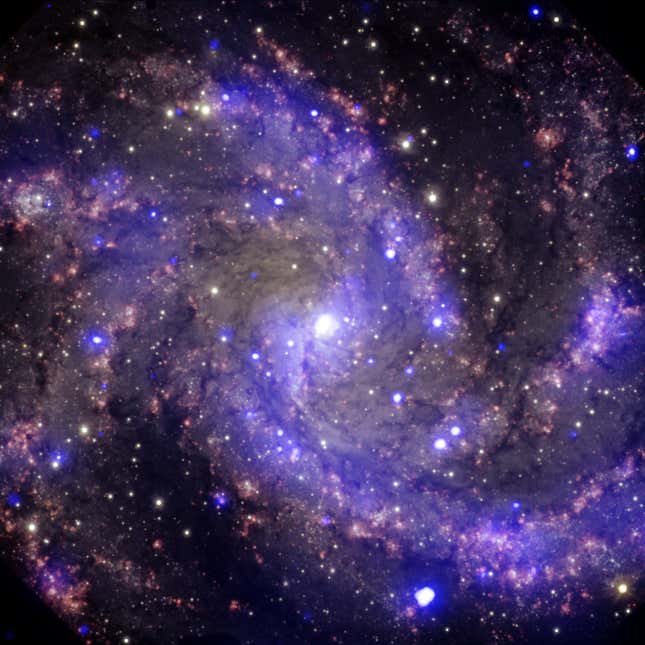Two supernovae 22 million light-years away ejected dust into their region of the universe, Webb Space Telescope observations reveal, indicating that violent stellar deaths could give rise to new star systems.
Supernovae are luminous stellar deaths; when some stars die, they explode outwards, spewing their material across the cosmos.
Advertisement
The supernovae currently in question are SN 2004et and SN 2017eaw, and both are in NGC 6946 — the Fireworks Galaxy. Webb imaged the two objects using its Mid-Infrared (MIRI) instrument.
Supernovae are known to belch this dust out into space when they occur, but it’s been difficult for astronomers to directly link the dust of stellar deaths to the dust that could contribute to the formation of new stars. The study describing Webb’s observations of the dust reservoirs was published today in the Monthly Notices of the Royal Astronomical Society.
Advertisement
Advertisement
“Direct evidence of this phenomenon has been slim up to this point, with our capabilities only allowing us to study the dust population in one relatively nearby supernova to date – Supernova 1987A, 170,000 light-years away from Earth,” said Melissa Shahbandeh, an astronomer at Johns Hopkins University and the Space Telescope Science Institute, and lead author of a new study documenting the findings, in an STScI release.
“When the gas cools enough to form dust, that dust is only detectable at mid-infrared wavelengths provided you have enough sensitivity,” Shahbandeh added. Enter Webb, which launched to a point in space one million miles from Earth in December 2021, and has been releasing scientific images of the cosmos since July 2022.

While Webb’s imaging wavelengths enable it to penetrate interstellar gas and dust, revealing intimate cosmic events like star formation, they also allow the sensitive telescope to specifically target dust detectable only at mid-infrared wavelengths.
Advertisement
The research team found a lot of dust surrounding the supernovae. There were 5,000 Earth masses worth of dust in SN 2004et alone. “It’s the highest dust mass detected in supernovae since SN 1987A,” said Ori Fox, a program lead at the Space Telescope Science Institute, in the same release, meaning yes—it’s the highest dust mass detected in a supernova since 1987.
The researchers noted that cooler dust may yet be discovered, meaning that the already significant amounts of dust that survived these supernovae could just be what’s detectable.
Advertisement
Dying and dead stars are one of Webb’s favorite targets. In March it imaged a Wolf-Rayet star, or a star that’s quickly losing mass but has not yet gone supernova. And when Webb observations are combined with those from other star-spotting-’scopes, like Hubble, the now-decommissioned Spitzer, and the Chandra X-ray Observatory, astronomers are able to make enhanced observations of the cosmos.
The two dusty supernovae recently imaged by the telescope are the first of five targets included in the science program GO 2666, entitled “Are Supernovae Dust Factories?” The first two targets seemed to suggest they are, and the three remaining targets may settle that finding.
Advertisement
More: Webb Telescope Reveals How Light Emerged From the Fog of the Early Universe
Services Marketplace – Listings, Bookings & Reviews